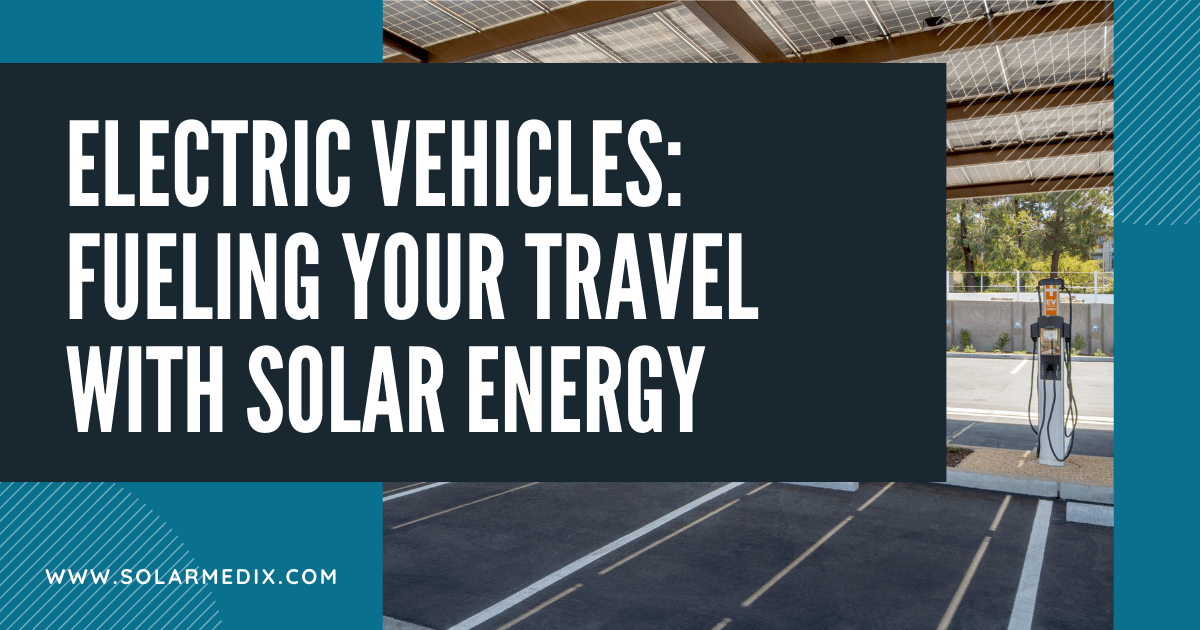The average individual in the U.S. drives around 13,476 miles a year. To put this in perspective, the circumference of the earth is 24,901 miles. In the U.S., the national average is 24.7 mpg; this means that a car will consume around 546 gallons of gas per year and will put out approximately 4.6 metric tons of CO2.
The Switch to Electric Vehicles and Hybrid Cars
Whether they want to cut expenses or reduce their carbon footprint, many more people around the world are turning to electric vehicles (EVs) or hybrid cars. However, these cars still need electric power. To cut costs further, you can use solar power to charge them.
The Cost of Solar EV Chargers
When it comes to electric vehicle chargers, there are three main categories. The option you pick will dictate the price you pay. For an EV solar charger, you have these options:
- Private EV charger
- Integrate private EV chargers
- Public EV chargers
Private Solar EV Chargers
A private solar EV charging station allows you to plug in your electric vehicle and charge the car battery. The charger can be hooked to a solar system or a grid-tied system. Thus, if you have an EV but no solar panels, it is an excellent home charging solution.
The cost for such a charging system is $2,000-$3,000 if installed together with a solar array. The cost may vary depending on various factors, such as the distance from the main distribution panel and whether trenching is needed.
Integrated Private EV Chargers
The integrated private EV charger is the same as the private EV charger. However, it can only be installed with a solar system with a solar inverter of the right size and brand. With this option, a charging cable will be connected to the inverter.
The inverter also has to be in a location where the electric vehicle can be parked for a few hours as it charges. With the right inverter, this system can cost around $1,000 if it is installed at the same time as the solar array.
Public EV Chargers
The third option that you have is a public EV charger. These chargers are designed for commercial use, and they let customers charge their EV at a fee. Public EV chargers are the most expensive option when it comes to solar EV chargers, and they require continuous software upgrades to keep operating efficiently.
The updates are synced to an app that lets customers know where they can find the closest EV charging stations. Besides that, they allow customers to reserve their spot in a virtual line so that they don’t need to wait when they get to the charging station.
A public charger will be integrated with a solar system, and the total cost is around $15,000. For a public charger that does not have solar system integration, the cost will be approximately $20,000 or higher. The cost of continuous software upgrades will be something that you need to consider, as well.
The Charge Time and DC Fast Chargers
If charging speed matters to you, using DC fast chargers might be a great option. The standard 7.6 kW charger can charge a 16 kWh battery in around 2 hours, while a 90 kWh battery will charge in about 12 hours.
However, if you use a 50 kW DC fast charger, the 16 kWh batteries can be charged in around 20 minutes, while the 90 kWh batteries can be charged in just 2 hours. The catch is that, to enjoy these fast speeds, you will need to pay more. The fast DC charger can cost you as much $60,000.
The Number of Panels Needed to Charge a Car
Electric power, just like gas, can be costly. While you can connect the EV charger to the grid and pay your power bill to charge a car, you can further cut your carbon emissions by using solar power. If you have a solar system or plan to install one to charge your vehicle, it may take fewer panels than you think.
A reasonable estimate is that it can take 8 to 14 panels to charge a car, depending on your location and the season. It will also depend on other factors such as how often you drive, the efficiency of your car, and the types of panels that you buy.
To understand how many panels you need, you will have to calculate how much power your car uses by estimating how many kWh it takes to cover 100 miles. You can use the carmaker’s website to determine the figure or visit the website, fueleconomy.gov, to get your figures.
Once you know the details, find out how much extra power you need to produce by multiplying the kWh per 100 miles the car consumes by the number of miles you drive on an average month. You should then divide that figure by 100.
For instance, if you drive 1,000 miles a month and your car consumes 20 kWh per 100 miles, you will need (20kWh*1000)/100, which will work out to 200 kWh of extra power.
To understand how many solar panels you need, simply calculate how much solar power each panel will produce. If your solar panels can produce around 20 kWh of power per month, it means you will need ten panels.
One option for installing solar panels is to install them onto a carport to ensure that you have a place to park your car as it charges. You can always add the solar panels to your existing system or integrate them into a new system.
When you install a solar system, it can be grid-tied so that any extra power generated goes to the grid. For months, when you do not use the EV, the extra power can go to the grid and earn you electricity credits.
In the future, it might be possible to have solar panels installed on the roof of cars, but today’s solar panels do not produce enough power to make this possible just yet. However, some game-changing technology, such as transparent solar panels, is on the horizon that will undoubtedly transform the future of solar energy!













